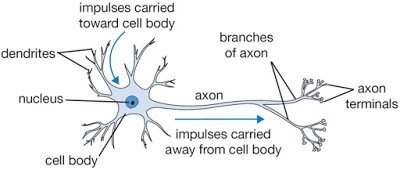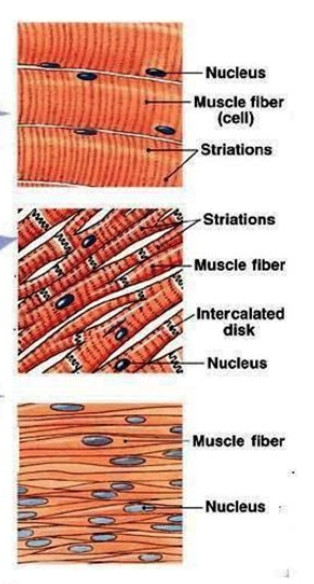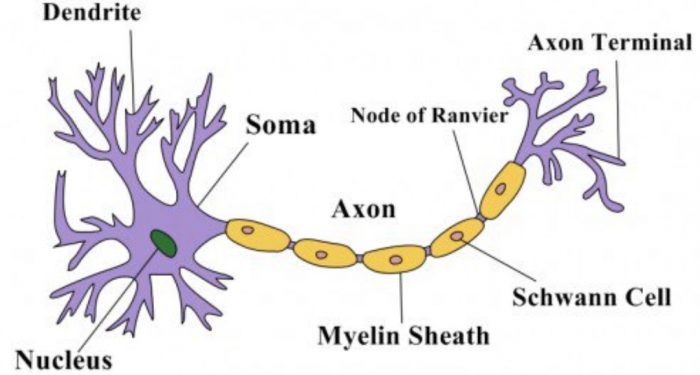Class 9 Science Chapter 6 Tissues NCERT Solutions
Page 69
1. What is a tissue?
Answer:
Tissue is a group of cells that are similar in structure and are organised together to perform a specific task.
2. What is the utility of tissues in multi-cellular organisms?
Answer:
In multicellular organisms, cells are grouped to form tissues. These tissues are specialised to carry out a particular function at a definite place in the body. Different types of tissues perform different function.It is because of this division of labour that multicellular organisms are able to perform all functions efficiently.
Page 73
1. Name types of simple tissues.
Answer:
Simple permanent tissues are of three types:
(1) Parenchyma
(2) Collenchyma
(3) Sclerenchyma.
Parenchyma tissue is of further two types
(1)aerenchyma
(2)chlorenchyma.
2. Where is apical meristem found?
Answer:
Apical meristem is present at the growing tips of stems and roots.
3. Which tissue makes up the husk of coconut?
Answer:
The husk of a coconut is made up of sclerenchyma tissue.
4. What are the constituents of phloem?
Answer:
Phloem is made up of four components:
(i) Sieve tubes
(ii) Companion cells
(iii) Phloem parenchyma
(iv) Phloem fibres
Page 77
1. Name the tissue responsible for movement in our body.
Answer:
The muscular tissue is responsible for movement in our body.
2. What does a neuron look like?
Answer:
They are highly specialized for being stimulated and then transmitting the stimulus very rapidly from one place to another.Nervous tissue contain unit cell called nerve cell or neurons.
(1) It consist of cell body which contain central nucleus and cytoplasm from which long thin hair like part arises called dendrons.
(2) The axon is a single,long,cylindrical structure that conduct electrical impulses away from neuron’s cell body.
(3) The dendrons further branches into dendrites.
3. Give three features of cardiac muscles.
Answer:
(1) They are made up of branched, cylindrical and uninucleate cell.
(2) Each cell is surrounded by sarcolemma, has cytoplasm with longitudinal myofibrils, intercellular spaces are filled with loose connective tissue and blood capillaries.
(3) They have stripes or light and dark bands.They occur in heart.
4. What are the functions of areolar tissue?
Answer:
Functions of areolar tissue:
(i) It helps in supporting internal organs.
(ii) It helps in repairing the tissues of the skin and muscles.
Exercises Page 78
1. Define the term “tissue”.
Answer:
Tissue is a group of cells that are similar in structure and are organised together to perform a specific task.
2. How many types of elements together make up the xylem tissue? Name them.
Answer:
Xylem is made up of 4 kinds of cells or elements:
(1) Tracheids: They help in transport of water and minerals vertically.
(2) Vessels:They help in transport of water and minerals vertically.
(3) Xylem parenchyma:They store food,helps in sideways conduction of water.
(4) Xxylem sclerenchyma(fibre):They are supportive in nature.
3. How are simple tissues different from complex tissues in plants?
Answer:
| Simple Tissue | Complex Tissue |
| They are made of only one type of cell which coordinate to perform a common function. | They are made up of more than one type of cell. |
| The cells are similar in structure and perform similar function. | Different types of cells perform different function. |
| For ex: parenchyma, collenchyma, sclerenchyma. | For ex: Xylem, Phloem |
4. Differentiate between parenchyma, collenchyma and sclerenchyma on the basis of their cell wall.
Answer:
| Parenchyma | Collenchyma | Sclerenchyma |
| Cell walls are relatively thin and cells in parenchyma tissues are loosely packed. | The cell wall is irregularly thickend at the corners, and there is very little space between the cells. | The cell walls are uniformly thickend and there are no intercellular spaces. |
| The cell wall in this tissue is made up of cellulose. | Pectin and hemicellulose are the major constituents of the cell wall. | An additional layer of the cell wall composed mainly of lignin is found. |
5. What are the functions of the stomata?
Answer:
Epidermis of a leaf contain small pores called stomata. Each stomata is bounded by a pair of two kidney shapes cells called guard cell.
6. Diagrammatically show the difference between the three types of muscle fibres.
Answer:
The three types of muscle fibre are Cardiac muscle cell, skeletal muscle cell and smooth muscle cell.
7. What is the specific function of the cardiac muscle?
Answer:
They contract and relax rapidly, rhythmically and tirelessly throughout life.Relaxation and contraction of these muscles helps to pump and distribute blood to various body parts.
8. Differentiate between striated, unstriated and cardiac muscles on the basis of their structure and site/location in the body.
Answer:
| Charater | Striated Muscles | Unstriated Muscles | Cardiac Muscles |
| 1. Shape of cells | Cells are long cylindrical non tapering and un-branched | Cells are long with tapering ends (spindle shape) and un-branched. | Cells are non-tapering cylindrical branched. |
| 2. Nucleus | Many nuclei (multi-nucleated) which are situated towards the periphery of muscle fibre. | The cells have only one nucleus (uni-nucleated) situated in the center. | Each cell contains one or two nuclei situated in the center. |
| 3. Striation | Transverse alternate light and dark bands present. | Striations or strips are absent. | Cells have faint striations. |
| 4. Mode of Contraction | Voluntary contract rapidly but soon undergo fatigue. | Involuntarily not at our will. Contract comparatively slow but do not fatigue. | Involuntarily, rhythmically contract and relax throughout life without fatigue under normal conditions. |
| 5. Example of location | Hands, legs and other skeletal muscles. | Stomach wall, intestine, ureter, bronchi etc. | Present in heart. |
9. Draw a labelled diagram of a neuron.
Answer :
10. Name the following.
(a) Tissue that forms the inner lining of our mouth.
Squamous epithelium
(b) Tissue that connects muscle to bone in humans
Tendon
(c) Tissue that transports food in plants.
Phloem
(d) Tissue that stores fat in our body.
Adipose tissue
(e) Connective tissue with a fluid matrix.
Blood
(f) Tissue present in the brain.
Nervous tissue
11. Identify the type of tissue in the following: skin, bark of tree, bone, lining of kidney tubule, vascular bundle.
Answer:
Skin: Stratified squamous epithelial tissue
Bark of tree : Cork protective tissue
Bone: Connective tissue
Lining of kidney : Cuboidal epithelial tissue
Vascular bundle: Complex permanent tissue(Xylem and phloem)
12. Name the regions in which parenchyma tissue is present.
Answer:
It is present in cortex and pith of stem and roots.It is present in mesophyll of leaves.
13. What is the role of epidermis in plants?
It is the outermost layer of cell.It is made up of one cell thick or single layer of cells.
14. How does the cork act as a protective tissue?
Answer:
The outer protective layer or bark of a tree is know as the cork. It is made up of dead cells.Therefore, it protects the plant against mechanical injury and extreme temperature.It also prevents the loss of water by evaporation.
15. Complete the following chart:
Answer:





I liked your post. It is really useful for students. Thank you!